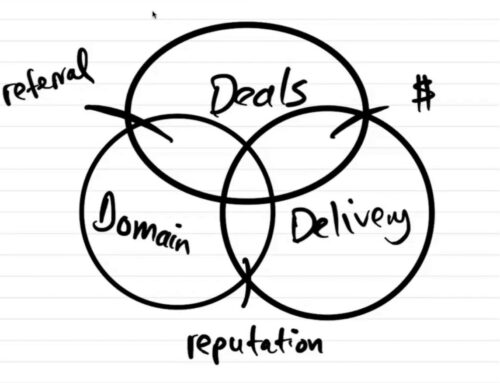CTO Studio: Competitive Advantage Through the Five E Model with Brant Cooper
Brant created Disruption Proof right before the pandemic hit, and during that time, he discovered the pandemic accelerated disruption on a bigger, more massive scale. For example, the concept of Zoom and remote work existed pre-pandemic, but suddenly, they became more commonplace due to the pandemic. Brant believes people were inflating the idea of disruption as a result of the pandemic when in actuality, the disruption shed light on the movement from the industrial age to the digital age and how the structure of how we manage people and processes are fundamentally changing in government, business, and education.
The command and control concept and the hierarchical management of science geared around the assembly line dominated the 20th century. However, our world doesn’t look anything like the assembly line anymore. There is now new management and a new structure. In addition, the fundamental basis of technology is different than it was before. Today, everything is digital, and the speed of information and the world’s connectedness was at the forefront of Brant’s mind when writing the book.
When the pandemic hit, it ended up being just one of the domino effects of disruptions that disrupted all aspects of our lives. During that time, there was the Black Lives Matter movement, issues with global supply change, the election; these events were also happening concurrently. Despite our level of interconnectedness, there is still a sense of fragility, and so there is a need to re-organize our systems so we can weather the storm better and handle these endless disruptions for the future. Everyone is rushing to get “back to normal,” but this is the new normal—the ability to deal with disruption in a modern way that is disruption-proof.
Brant and Etienne are in disbelief that Apple, the most advanced technology organization, attempted to take working from home away from their employees. Today, hiring engineers is more complex than ever if you don’t offer remote work at least some of the time. Offering an in-office-only work environment, according to Brant, is an old-school, top-down, hierarchical management system, and he is surprised that Apple decided to manage this way.
What about people that do believe we should be back in the office? The answer isn’t binary. It shouldn’t be “a remote-only option” or “in office-only option,” or even a hybrid of choosing one or two arbitrary days of the week to work from home. It should be up to the team. According to Brant, teams are the new unit of work. To think a team of seven to ten team members all have to drive into a centralized physical office dealing with hours of commuting in traffic is ridiculous. The teams should choose their workspaces that fit their needs. Maybe the team members rotate workspace locations to meet the needs of each team member, and there’s nothing wrong with that.
Management is acting as though they are actively helping to keep their teams engaged, but when in the office, the reality is, we never see our leaders or bosses. It’s ridiculous if managers feel they have to monitor team collaboration because they are working from home. Leaders and managers never micromanage collaboration when in the office. So it’s arbitrary. It comes down to comfort level and the illusion of trust. It’s the idea that if I see them physically in the office, I know that they are working together and collaborating. But in reality, what they’re doing is participating in regular activities between working and collaborating.
Brant says the eight-hour workday and forty-hour workweek is arbitrary as well. Working remotely exposes the fact that there is complacency and convenience when working on-site, and when working remotely, managers need to offer ways to be more intentional in considering their employee’s mental well-being. The pandemic drove home that people have a hard time balancing work and personal life when working remotely. We know that maintaining healthy relationships with partners, children, spirituality, and physical and mental health all enable employees to be productive and content. Science shows that these elements need to be satisfied to increase the productivity of employees, so it’s mind-boggling to hang on to this old-school mentality just because it’s the way “we’ve always done it.”
When talking about empathy, sure, it’s essential when relating to customers when developing products and marketing, but another component is having empathy inside the company. What’s getting lost in the conversation is compassion. What are the actual needs? There are simple questions that both leaders and employees need to address when evaluating a disruption-proof, modern work environment. Why do employees want to be remote? Why don’t managers want to be remote? Understand everyone’s stance and how policies affect employees. No one is stopping to ask why. Why wouldn’t employers want to improve productivity or the quality of the employee’s life?
The Five E’s
The five E’s are in service to creating an organization that is disruption-proof in the digital revolution. This new world increases complexity and the continuous disruptions that occur virtually out of the blue. We can prepare for them to an extent such as security and disaster recovery, for example, but we don’t know when such disasters will occur and to what extent. If this is the new world, we need to change the mindset and behavior across the organization from the front line to C-suite. These five elements represent every department and these behaviors:
Empathy: In the disruption proof model, empathy means understanding customers, stakeholders, and colleagues deeply. Understanding their desires, needs, motivation, and aspirations, for example. Understanding beyond what they’re saying. Focusing the understanding on why they are saying it.
Exploration: Exploration is a learning mode. It’s human-centered design thinking and running experiments through a learning mentality when facing uncertainty.
Evidence: Evidence is how we cut through our personal biases. It’s how we come together to build consensus while willing to look at the data to agree on policies. The commitment to use evidence ultimately allows informed decisions that cut through biases.
Equilibrium: Equilibrium is balancing execution work with exploration work. An example of equilibrium is if you’re on a sales team working with a new product, you may need to update your sales pitch after researching and exploring the new project features. So it’s a continuum of balancing executive work with exploration work.
Ethics: Ethics defines expected behavior to the edge level, so employees understand the boundaries for their behaviors. Brant brings up an example from an ex-Facebook engineer who revealed that all his manager cared about was getting another 30 seconds of engagement time no matter how the team did it. Although it went against corporate values, the focus on engagement was the most prevalent, leading to unethical behavior. Agile offers an opportunity to give the team a mission, and you can ascribe values and ethics at the team level. If you have people on those teams to back up these ethics, it becomes a self-reinforcing culture at the grassroots. This goes right along with empowering the edge to exhibit those behaviors.
All these E’s are trainable up to the edge so that employees are empowered to make their own decisions as long as these values and concepts are kept in mind. This is why Brant puts so much emphasis and importance on agile practices. The five E’s help to build autonomous employees and foster continuous empathy. It’s a roadmap that promotes empathic thinking, allowing for questions on how we are changing lives both outside and inside the company. It promotes empathy-driven ideas and innovation.
It enables employees to follow an empowering process that fosters empathic communication, and it’s a coachable framework that any employee can be pushed through for the company’s competitiveness. It’s designed to be used wherever there is uncertainty. It can be used if, for example, your design and manufacturing teams aren’t working so well together. It can be used for an HR department that is launching or relaunching a new process. It can offer improvements from an efficiency standpoint. It’s a framework that will build a sustainable future for the company, attract top talent, and extract beautiful and innovative ideas.




